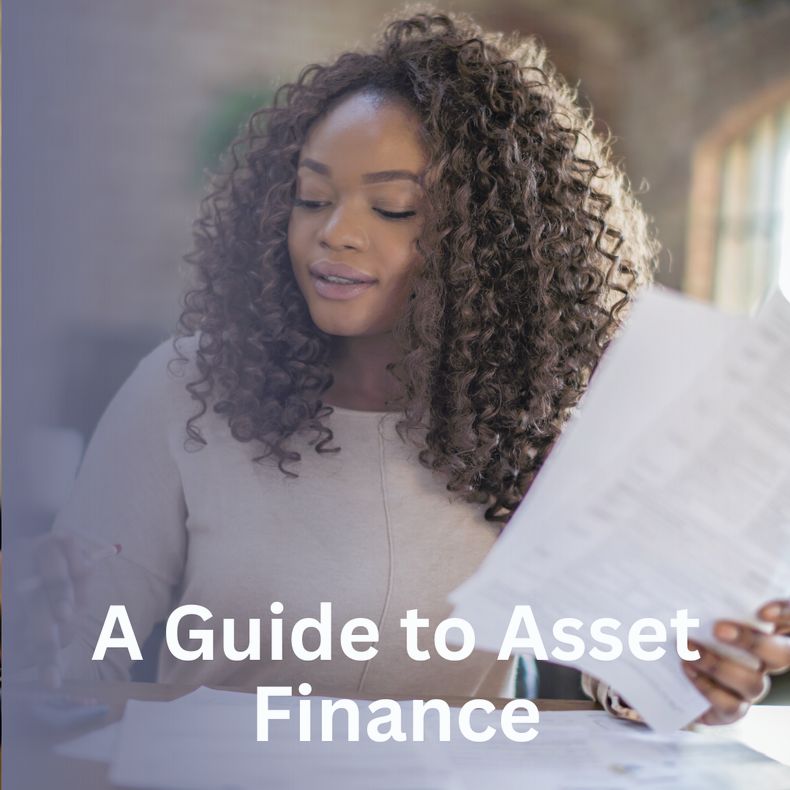A Guide to Asset Finance

For businesses looking to invest in new equipment, vehicles, or machinery, asset finance offers a cost-effective way to spread the cost instead of paying upfront. This type of finance enables businesses to acquire essential assets while maintaining cash flow and preserving working capital.
This guide explores how asset finance works, its benefits, and the different types of asset finance available to businesses.
1. What is Asset Finance?
Asset finance is a form of business funding that allows companies to purchase or lease essential equipment without the need for large upfront payments. It is commonly used for:
✔ Vehicles – Cars, vans, HGVs, and specialist transport.
✔ Machinery and Equipment – Manufacturing, engineering, and IT equipment.
✔ Technology – Computers, software, and office systems.
Instead of paying in full at the time of purchase, businesses spread the cost over a set period, making it more manageable.
2. How Does Asset Finance Work?
The process of securing asset finance typically follows these steps:
1️⃣ Business identifies the required asset – New or used equipment, vehicles, or machinery.
2️⃣ Choose a finance option – Decide between leasing, hire purchase, or refinancing.
3️⃣ Lender purchases the asset – The lender buys the asset and provides it for business use.
4️⃣ Regular payments made – The business pays for the asset in instalments over an agreed term.
5️⃣ Ownership or return – Depending on the finance type, the business may own the asset outright or return/upgrade it at the end of the agreement.
3. Types of Asset Finance
There are several asset finance options, each suited to different business needs:
A. Hire Purchase (HP)
✔ The business pays fixed monthly instalments over an agreed term.
✔ Ownership transfers to the business once the final payment is made.
✔ Suitable for businesses looking to own the asset outright at the end of the agreement.
B. Finance Lease
✔ The business leases the asset for a set period, making regular payments.
✔ At the end of the term, the business can extend the lease, upgrade, or return the asset.
✔ Suitable for businesses needing flexibility without ownership.
C. Operating Lease
✔ Similar to a finance lease but usually shorter-term and with lower payments.
✔ The asset is returned at the end of the agreement.
✔ Commonly used for vehicles, IT, and high-tech equipment.
D. Asset Refinance
✔ Businesses can release cash tied up in existing assets by refinancing them.
✔ Useful for improving cash flow without selling equipment.
✔ Allows businesses to free up working capital for other investments.
💡 Tip: The best type of asset finance depends on whether a business wants to own the asset, upgrade it over time, or simply use it without long-term commitment.
4. Key Benefits of Asset Finance
Asset finance offers several advantages, including:
✅ Preserves Cash Flow – Avoids large upfront costs, allowing businesses to retain capital.
✅ Fixed Monthly Payments – Makes budgeting and financial planning easier.
✅ Flexible Terms – Different options available depending on business needs.
✅ Access to the Latest Equipment – Leasing allows businesses to upgrade assets regularly.
✅ Tax Efficiency – Some agreements may offer VAT and tax benefits.
5. Things to Consider Before Applying
📌 Long-Term Costs – While monthly payments are manageable, the total cost over time may be higher than an outright purchase.
📌 Ownership vs Leasing – Businesses must decide whether they want to own the asset at the end of the term.
📌 Credit & Affordability Checks – Lenders assess business stability before approving finance.
6. Finding the Right Asset Finance Solution
Many lenders offer asset finance, each with different rates, terms, and conditions. The right option depends on:
• The type of asset being financed
• The repayment term and interest rates
• Whether ownership is required at the end of the agreement
With so many choices, working with a commercial finance broker can help businesses:
✔ Compare lenders and find the most competitive terms.
✔ Select the best finance option based on business needs.
✔ Navigate the application process efficiently.
Asset finance is a flexible and practical solution for businesses looking to invest in new equipment while maintaining cash flow. By spreading the cost, companies can acquire essential assets without large upfront expenses, ensuring they have the tools needed to grow.
📌 Businesses exploring asset finance should carefully compare options, terms, and repayment structures to find the most suitable solution.
